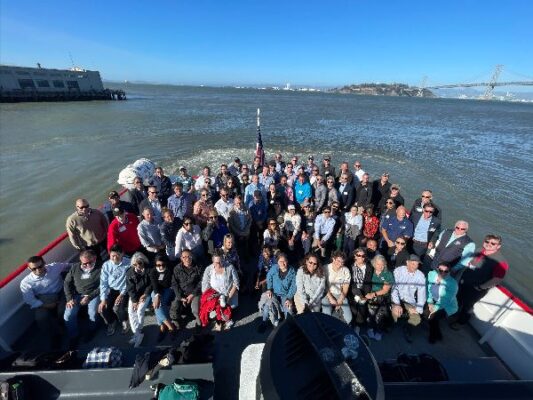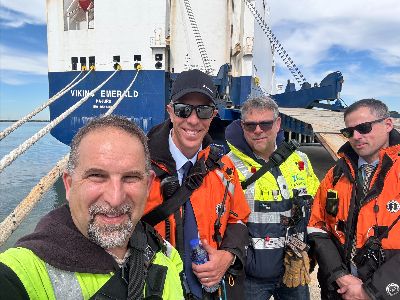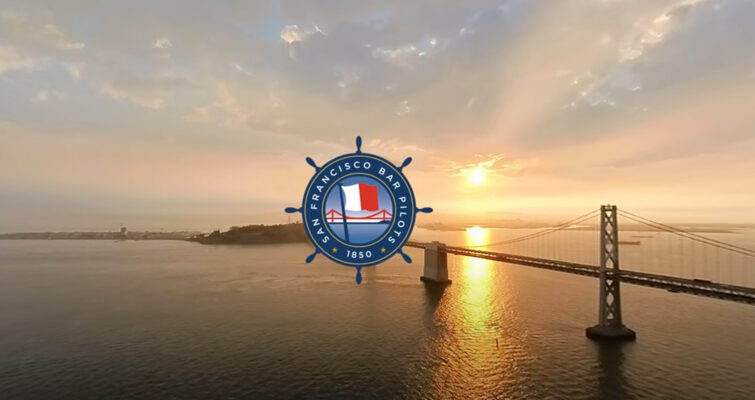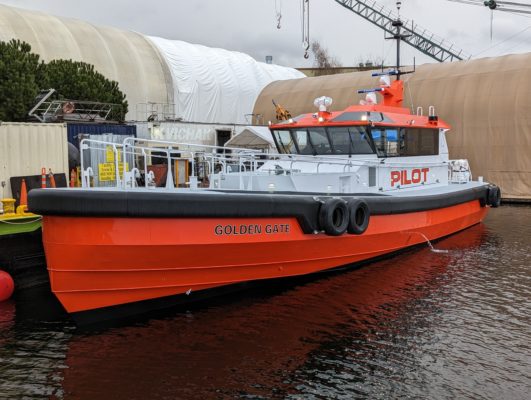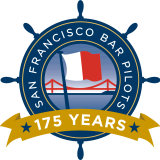MSC Anna arrives in San Francisco Bay, April 15, 2020. Photo: Port of Oakland
Reprinted with permission from gCaptain
Guest Post By Bar Pilot Captain George Livingstone
In the last decade, one of the biggest challenges faced by mariners and especially ship pilots around the world has been the introduction of the Ultra Large Container Vessel (ULCV). I’ve written on this subject before, it’s a very big topic, literally. To say the ships are gigantic is an understatement and collectively mariners are proud of how seamlessly and safely we have incorporated these giants into daily operations. For the non-mariner, it may be difficult to understand just how big these ships are, let’s try to explain.
Panamax
As recently as ten years ago, most container ships around the world were sized to enable them access to the Panama Canal. The Panama Canal locks are only so long and wide, the idea was to build a container ship that would fit. Ultimately an entire class of ship was designated Panamax Class (950’ long, 106’ wide). The weight of this class was about 50,000 Tons and Panamax became the standard for container ships worldwide.
Sea Changes
A sea change occurred in containerized shipping during the first decade of the 21st century. The idea of economy of scale came into its own, reduce per unit costs by making bigger ships, much much bigger. And so the ULCV came to be and nothing has been the same in container shipping since.
Ultra and Ultra Large
The first ULCV’s that called at the Port of Oakland were about 1148’ long X 138’ wide, longer, wider and heavier than the Panamax Class. The significant challenge for the San Francisco Bar Pilots wasn’t just adjusting to handling much bigger ships, it was doing so with little time. Through necessity, the class was introduced and put into service relatively quickly.
There just weren’t any ports in the United States, excepting the Port of Long Beach (the only port in the country experienced with +400,000 ton ships) that could handle ULCV’s at the time. It was just the beginning of what is still an ongoing process and several ports throughout the United States have made major capital improvements to accommodate ULCVs. And they keep getting bigger with a new class, Ultra Ultra Large (UULCV) now in production. These +1,300’ UULCV’s are now beginning to call at ports like the Ports of Oakland and Long Beach.
Lightweight vs Heavyweight
The difference between 950’, 1150’ and +1300’ may not, on initial consideration, seem like much, a matter of only two/three hundred feet. That’s a football field, does the reader consider a football field long? That’s exactly what we are talking about and length is not the primary difficulty, its weight. A 950’ Panamax ship is about 50,000 Tons, a 1312’ UULCV is 250,000 Tons. It would take five Panamax ships to match one UULCV in weight.
MSC Anna (19,000 TEU)
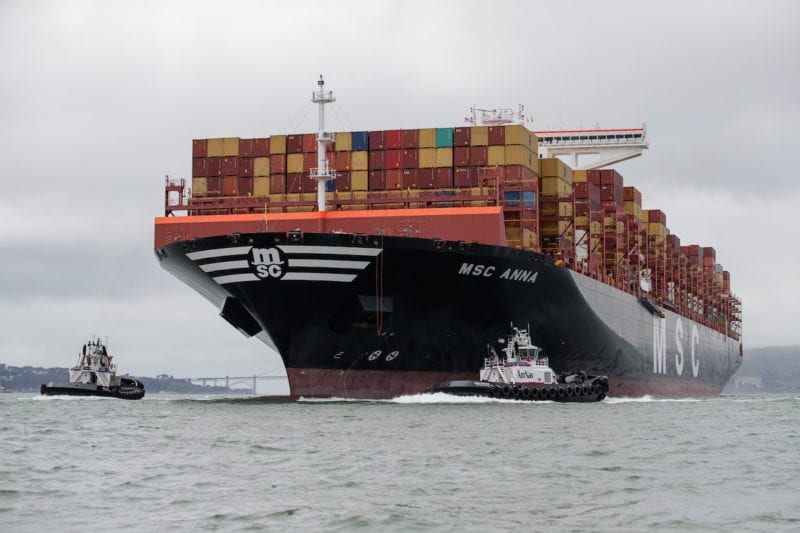
MSC Ann in San Francisco Bay en route to the Port of Oakland, April 15, 2020. Photo: Abner Kingman
In fact, the UULCV MSC Anna just called on the west coast of the United States establishing an all-time record for a container ship. At 1312’ X 191’, it is the biggest ship to ever call at the Port of Oakland. To put it in perspective, the tallest building on the west coast of the USA is the Salesforce.com tower in downtown San Francisco. The MSC Anna is a football field LONGER. Imagine that for a moment. The Empire State Building in NYC is 1250’ tall from street level to the top of the roof line, MSC Anna is once again, 62’ longer excluding the 200’ tall antenna. The weight of the Empire State Building clocks in at about 365,000 Tons, a 1320’ loaded UULCV weighs in a close second at 250,000 Tons.
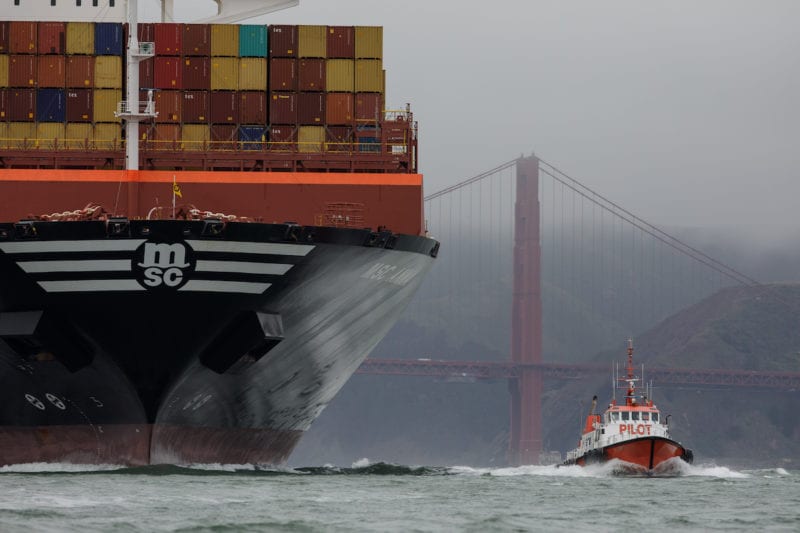
Photo: Abner Kingman
To pilot a ship like MSC Anna is equivalent to laying the Empire State Building on its side, then navigating through a 700’-900’ channel with several turns added in for fun. It’s the stuff of bad dreams! I think most of us have had those crazy dreams where you find yourself driving something like a Boeing 747 thru rush hour downtown city traffic, all the while trying to figure out how to avoid taking out the sides of buildings while navigating rush hour! Well, real-life met dream life when professional ship pilots had to start driving ships like MSC Anna.
Although the San Francisco Bar Pilots were ready and prepared for the MSC Anna, it was not a normal or average job. Piloting ships like the Anna is the equivalent of extreme sports, expert professionals complete extremely difficult maneuvers that few think possible. The sheer length, width, height and weight is a game-changer, not that it can’t be done but that it must be done with more thought, collaboration, care and training than the already very good piloting systems in place.
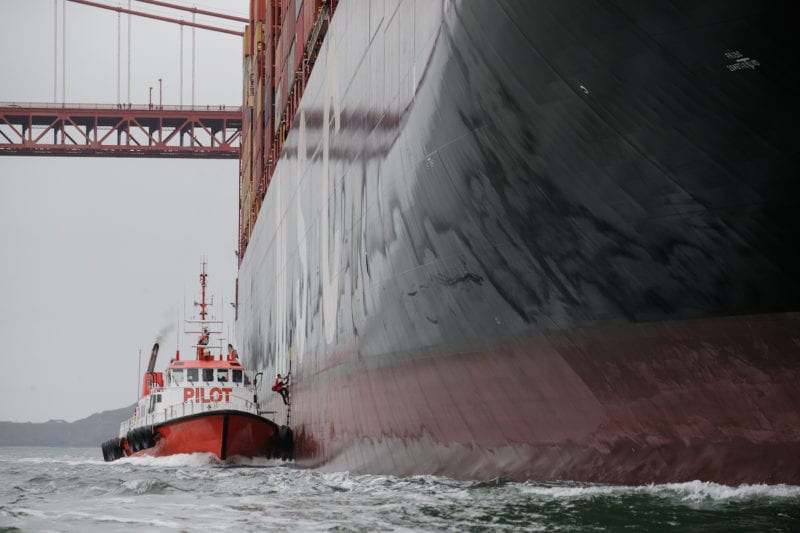
A San Francisco Bar Pilot boards the MSC Anna as it enters San Francisco Bay. Photo credit: Abner Kingman
The ship actually handled very well for its size/weight, the designers deserve some credit, but this was a leap up from any other ship I have piloted. It circles back to weight, on ships this big, speed is more critical than ever. All aspects of piloting have to be done slower, from route driving to docking. They are so heavy that any developed momentum, even in a turn, can pose problems if not precisely controlling the evolution. The takeaway? Don’t try this at home folks, leave it to the professionals. As to the professionals? Never be complacent, respect this class of ship, embrace new ideas and continue the successful collaboration with all stakeholders in this vital industry keeping the global supply chain functioning for a world that is in serious crisis.
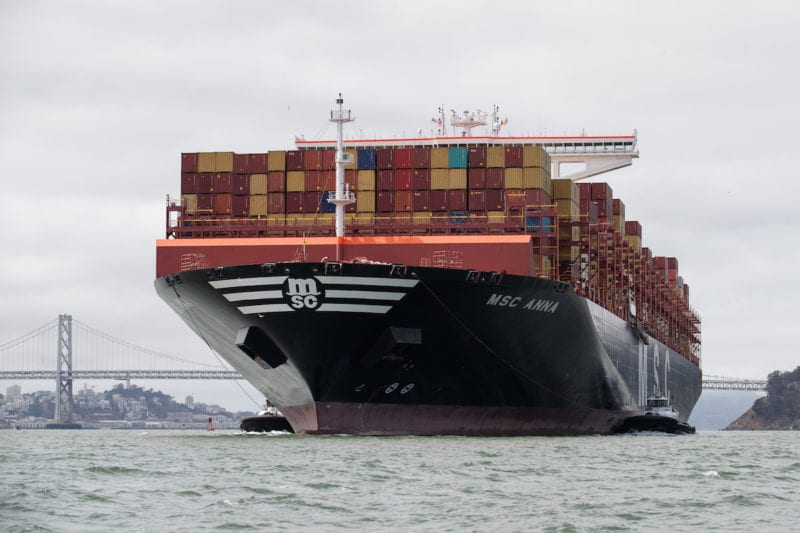
Photo Credit: Abner Kingman
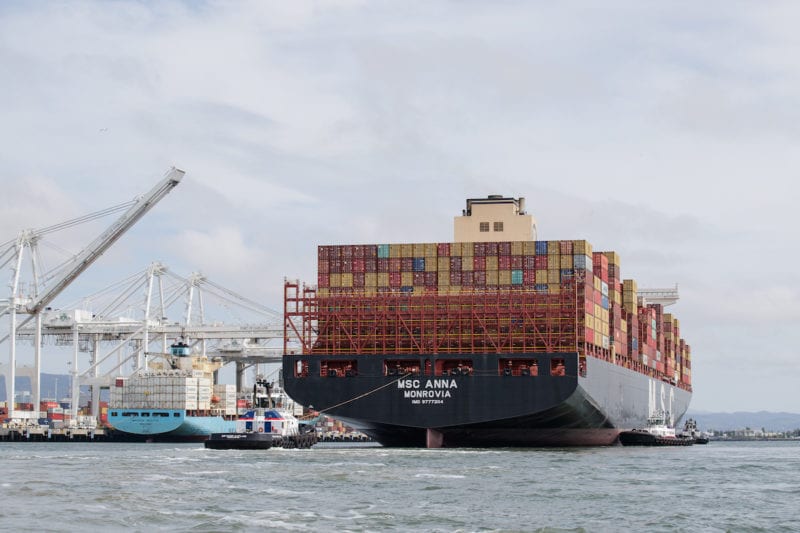
Photo Credit: Abner Kingman
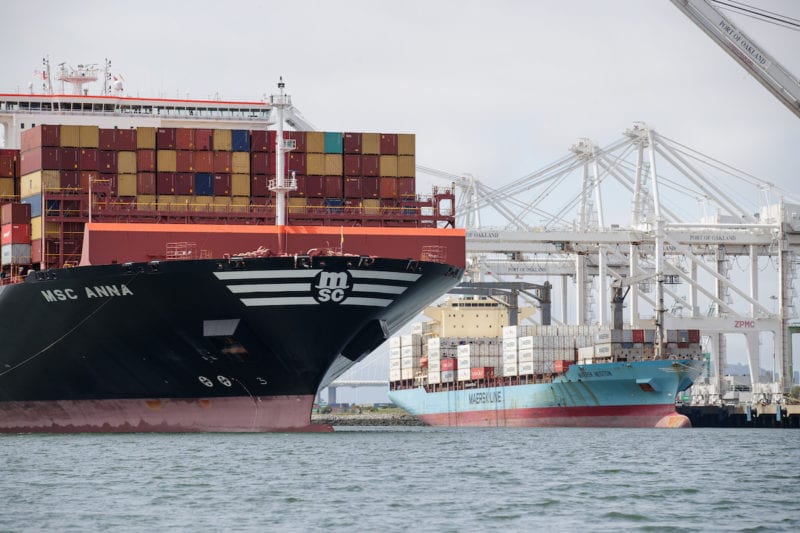
Photo Credit: Abner Kingman
Captain George Livingstone is a San Francisco Bar Pilot, co-author of ‘Tug Use Offshore’, contributing author of ‘IMPA On Pilotage’ and a regular contributor to gCaptain. Read more from Captain George Livingstone
